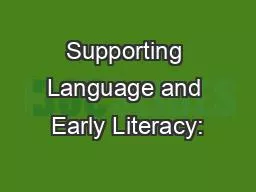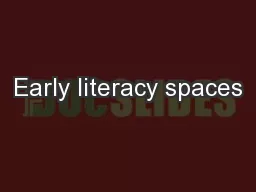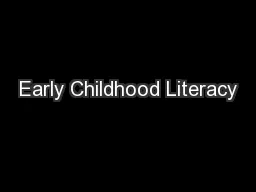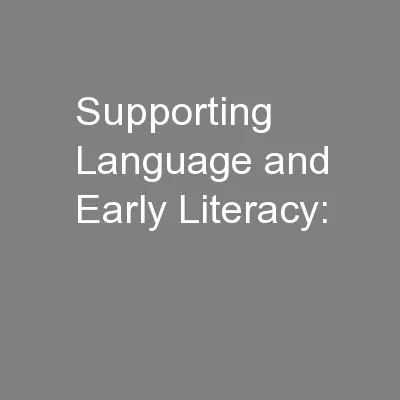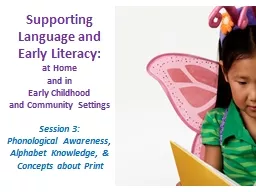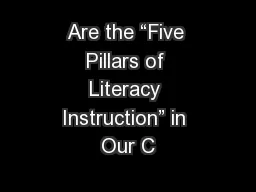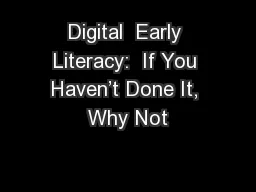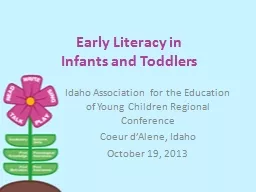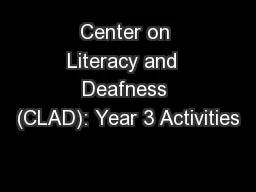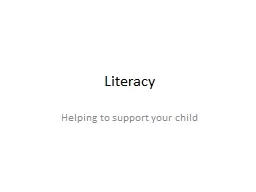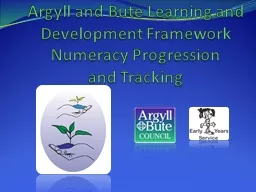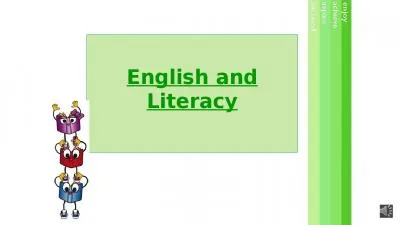PPT-Supporting Language and Early Literacy:
Author : desiron | Published Date : 2020-06-22
at Home and in Early Childhood and Community Settings Session 5 Providing Effective Read Alouds Evidencebased Approaches Early Literacy Advisory Group Our
Presentation Embed Code
Download Presentation
Download Presentation The PPT/PDF document "Supporting Language and Early Literacy:" is the property of its rightful owner. Permission is granted to download and print the materials on this website for personal, non-commercial use only, and to display it on your personal computer provided you do not modify the materials and that you retain all copyright notices contained in the materials. By downloading content from our website, you accept the terms of this agreement.
Supporting Language and Early Literacy:: Transcript
Download Rules Of Document
"Supporting Language and Early Literacy:"The content belongs to its owner. You may download and print it for personal use, without modification, and keep all copyright notices. By downloading, you agree to these terms.
Related Documents

